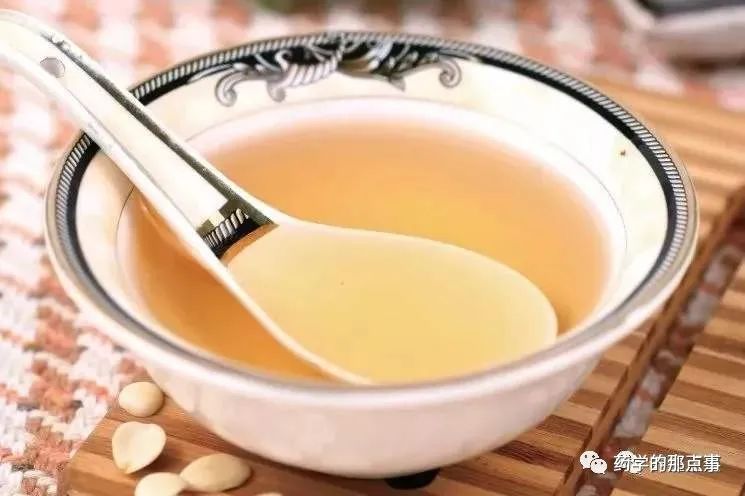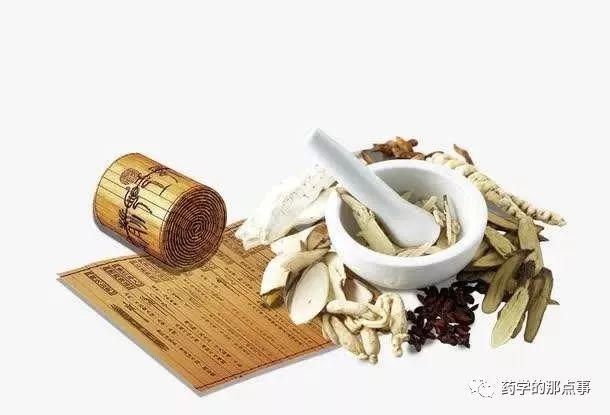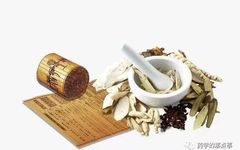
Topical Ointments: A class of preparations made from drugs and suitable bases for external use, forming semi-solid or nearly solid forms. They have protective, lubricating, and local therapeutic effects, and can also exert systemic therapeutic effects through the skin and mucous membranes. The latter is also known as Transdermal Drug Delivery Systems (TDDS) or Transdermal Therapeutic Systems (TTS).
1. Characteristics: In transdermal drug delivery systems, drugs penetrate the skin into the systemic circulation, avoiding the first-pass effect in the liver, preventing drug degradation in the gastrointestinal tract, reducing fluctuations in blood drug concentration, and minimizing side effects.
2. Classification: Ointments; plasters (black plasters, white plasters); patches (rubber patches, gel patches, adhesive patches).
3. Process of Transdermal Drug Absorption: Release: Detachment from the base and diffusion to the skin or mucosal surface. Penetration: Entering the dermis and subcutaneous tissue, exerting local effects. Absorption: Entering systemic circulation through blood vessels or lymphatic vessels, producing systemic effects.
4. Routes of Transdermal Drug Absorption: Intact epidermis – the main route; skin appendages (hair follicles, sebaceous glands, sweat glands).
5. Factors Affecting Transdermal Drug Absorption:
(1) Skin condition: Application site, skin lesions, temperature and humidity, cleanliness.
(2) Drug properties: Ideal drugs should have suitable oil-water partition coefficients, possessing both lipophilicity and hydrophilicity.
(3) Composition and properties of the base:
① Absorption: Emulsion bases > hydrophilic ointment bases (vaseline + lanolin), silicone, lard > hydrocarbon bases.
② The pH of the base affects the penetration and absorption of weakly acidic and weakly basic drugs: When the pH of the base is less than the pKa of weakly acidic drugs or greater than the pKa of weakly basic drugs, the molecular form of the drug significantly increases, facilitating absorption.
③ Additives: Surfactants, penetration enhancers.
④ Bases that increase skin hydration can also enhance drug permeability. Highly oily bases have strong occlusive properties, significantly increasing skin hydration.
(4) Other factors: Also closely related to drug concentration, application area, frequency of application, and contact time with the skin.
Note: Water-soluble bases such as polyethylene glycol release drugs quickly but have little effect on drug penetration, making the resulting ointments difficult to absorb transdermally.
Ointments: Semi-solid external preparations made by uniformly mixing extracts, powdered herbs, and suitable bases.
1. Characteristics: Commonly used for chronic skin diseases, providing protection to wounds, lubricating the skin, and local treatment. They also have systemic therapeutic effects.
2. Common Bases: Oily (ointment), water-soluble, and emulsion types (water-in-oil, oil-in-water).
The ideal base should meet the following requirements: ① Have suitable viscosity, easy to apply to skin or mucous membranes. ② Can mix with the drug’s aqueous or oily solution, facilitating drug release and absorption. ③ Stable properties, with no incompatibility with the drug. ④ Non-irritating, not hindering normal skin function and wound healing. ⑤ Easy to wash off, not staining clothing.

Oily Bases:
(1) Characteristics: Advantages – ① Lubricating, non-irritating; ② Can occlude the skin surface, promoting skin hydration, providing stronger protection and softening effects than other bases; ③ Compatible with various drugs.
Disadvantages – ① Greasy and hydrophobic; ② Poor drug release; ③ Difficult to mix with aqueous liquids; ④ Hard to wash off with water; ⑤ Not suitable for acute inflammatory wounds with excessive exudate.
(2) Classification: Mnemonic: Ointment oil bases are divided into four categories, animal and vegetable oils, hydrogenated oils, waxes, hydrocarbons, and silicone ointments are not suitable for eyes.
Oily types: Animal oils – lard; Vegetable oils – sesame oil (best), cottonseed oil, soybean oil, rapeseed oil, peanut oil. Hydrogenated vegetable oils – not prone to rancidity.
Waxy types: Lanolin – good water absorption, increases drug permeability, viscous; beeswax (yellow, white) – regulates viscosity, aids emulsification; white wax – increases viscosity; spermaceti – increases viscosity.
Hydrocarbon types: Vaseline – yellow, white; solid paraffin – regulates viscosity; liquid paraffin – regulates viscosity.
Silicone (silicone oil): Dimethylpolysiloxane and phenylmethylpolysiloxane → ointment (non-toxic but irritating to eyes, not used as an eye ointment base).
Note: Vaseline: White vaseline is non-irritating to skin and mucous membranes. It is very greasy but has poor water absorption (can only absorb 5%), thus not suitable for areas with excessive exudate. Combining with lanolin, cetyl alcohol, and cholesterol can increase water absorption. Combining with surfactants can improve drug release and permeability. Viscosity regulation: four waxes – beeswax, white wax, spermaceti, paraffin.
Emulsion Bases:
(1) Characteristics: ① Have certain affinity for both oil and water, facilitating drug release and penetration; ② Can absorb exudate from wounds, easy to apply and wash off; ③ Can be used for subacute, chronic, and non-exudative skin diseases, but contraindicated for erosive, ulcerative, and purulent wounds; ④ Drugs that are unstable in water should not be made into emulsion ointments.
(2) O/W emulsion bases: Can mix with large amounts of water, non-greasy, easy to wash off. Drug release and penetration are faster than other bases, but if the affected area has too much secretion, the secretion may be reabsorbed into the skin, worsening inflammation (reverse absorption), so attention should be paid to the choice of indications. Excessive secretion is not suitable (reverse absorption).
For example, a soap (anionic surfactant) is used as an emulsifier in an O/W emulsion base:
Formula: Stearic acid 120g, monostearin 35g, liquid paraffin 60g, vaseline 10g, lanolin 50g, triethanolamine 4g, ethyl paraben 1g, distilled water to 1000g.
Formula analysis: ① Triethanolamine soap: Triethanolamine and some stearic acid saponify to form stearic acid amine soap – an O/W emulsifier. ② Unsaponified stearic acid: Acts as the oil phase emulsified into the dispersed phase and can increase the viscosity of the base. ③ Lanolin: Increases the water absorption of the oil phase and the permeability of the drug. ④ Liquid paraffin and vaseline: Regulate the viscosity of the base, increase lubricity.
⑤ Monostearin: Increases the water absorption capacity of the oil phase, aids emulsification, stabilization, and thickening.
⑥ Ethyl paraben: Preservative. ⑦ Glycerin: Humectant.
(3) W/O emulsion bases: Absorb some moisture, have good transdermal properties, and excellent spreadability.
For example, dehydrated sorbitan fatty acid esters (Span) are used as emulsifiers in W/O emulsion bases:
Formula: Vaseline 400g, stearyl alcohol 180g, sorbitan tristearate 5g, ethyl paraben 1g, add water to 1000g.
Analysis: ① Sorbitan tristearate: Span, W/O emulsifier. ② Stearyl alcohol (octadecanol): Aids emulsification.
Water-Soluble Bases:
(1) Characteristics: ① Fast drug release. ② Non-greasy and non-irritating. ③ Can absorb tissue exudate, suitable for erosive wounds and mucous membranes. ④ Poor lubricating effect. ⑤ Prone to dehydration and mold, thus requiring the addition of humectants and preservatives.
(2) Classification: ① Cellulose derivatives: Methylcellulose, CMC-Na, etc. ② Polyethylene glycol (PEG): This product mixed with benzoic acid, tannic acid, phenol, etc., can excessively soften the base, reducing the preservative capacity of phenolic preservatives; long-term use can lead to skin dryness. ③ Carbomer (Carbopol): Suitable for the treatment of seborrheic dermatitis. ④ Others: Sodium alginate, glycerin gelatin.
Liquid preparations are good suspending agents, thickeners, and auxiliary emulsifiers, and can also be used as adhesives, coating materials, and sustained-release, controlled-release materials.
3. Preparation of Ointments
(1) Treatment of the Base: Oily bases: Heat to melt, and filter while hot to remove impurities; if necessary, sterilize at 150°C for 1 hour and remove moisture. Water-soluble bases: Swell and dissolve to prepare solutions or gels for later use.
(2) General Methods for Adding Drugs to the Base:
1) Insoluble solid drugs: ① Powder + glycerin, wax → grind evenly → gradually add the base. ② Powder + melted base → stir until cool.
2) Plant oil extracts: ① + plant oil solvent → heat to extract → mix with the base. ② + mixture of oil and base → heat to extract → condense.
3) Soluble drugs: ① Water-soluble drugs: Mix with water-soluble bases → add to the base; mix with oily bases → dissolve a small amount in water → absorb with lanolin → mix with the remaining base; mix with emulsion bases → dissolve in the corresponding aqueous or oily phase. ② Oil-soluble drugs → directly dissolve in melted oily bases.
4) Chinese herbal extracts: ① Chinese herbal decoctions, fluid extracts, etc. → concentrate to a paste, then mix with the base. ② Solid extracts → add a small amount of solvent (such as water, dilute alcohol, etc.) to soften or grind into a paste, then mix with the base.
5) Co-melted components: Can first grind and co-melt, then mix with the cooled base at around 40°C.
6) Volatile or heat-sensitive drugs: Wait for the base to cool to around 40°C, then mix evenly.
(3) Preparation Methods
1) Grinding method: Fine powder of the drug is ground with a small amount of base or ground into a fine paste with a suitable liquid, then gradually add the remaining base and grind evenly.
Applicable: When the viscosity of the ointment base is moderate or the main drug is not suitable for heating, and can be evenly mixed at room temperature through grinding.
2) Melting method (hot melting method): First heat and melt the base → gradually add the drug → stir until it solidifies. Applicable: When the base contains components with different melting points that cannot be evenly mixed at room temperature; the main drug can dissolve in the base; requires melted base to extract active ingredients from herbal pieces.
For example: Higher melting point – beeswax, paraffin, etc. should be heated and melted first, while lower melting point – such as vaseline, lanolin, etc. should be added afterward.
3) Emulsification method: Heat the oil phase to melt; heat the water phase to the same temperature (about 80°C) → mix the two phases → stir until solidification.
Methods for mixing oil and water phases: ① Add the dispersed phase to the continuous phase, suitable for emulsion systems with small dispersed phase volume. ② Add the continuous phase to the dispersed phase, suitable for most emulsion systems. ③ Mix both phases simultaneously, suitable for continuous or large-scale operations.
Eye Ointments: (sterile preparations) refer to sterile ointments made from drugs and suitable bases for ophthalmic use.
Commonly used base – vaseline: liquid paraffin: lanolin (key position: water absorption, adhesion, surface activity) = 8:1:1. Especially suitable for antibiotic and Chinese herbal eye ointments.
Preparation Key Points: Base – dry heat sterilization at 150°C for 1-2 hours. Preparation tools – dry heat sterilization. Packaging with ointment tubes – soaked in phenol solution or 70% ethanol (disinfectant), rinsed with sterilized distilled water before use. Operation – clean, sterile conditions.
Quality Requirements: ⑴ The base should be uniform, fine, non-irritating, and easy to apply to the skin. ⑵ The base should not exhibit rancidity, discoloration, hardening, melting, or oil-water separation. ⑶ Ointments containing fine powder should not have particles larger than 180μm. ⑷ The dosage, sterility, and microbial limits should comply with regulations.
2. Quality Requirements for Black Plasters
⑴ The paste of black plasters should be oily, fine, shiny, with appropriate firmness, evenly applied, and should adhere to the skin without moving after heating. ⑵ Black plasters should be black, without erythema. ⑶ The softening point of black plasters should meet the relevant regulations for each variety. ⑷ The weight variation limit of black plasters should comply with regulations.
3. Quality Requirements for Patches
⑴ The patch material should be evenly applied, with a smooth surface, consistent color, and no peeling or loss of adhesion. The backing surface should be flat, clean, and free of leakage. If organic solvents are used in the application, residual solvents should be checked.
⑵ The length and width of each patch should not be less than the indicated size when measured at the midpoint. ⑶ The weight variation limit of patches should be within ±5% of the average weight, with no more than 2 patches exceeding the limit, and no single patch exceeding the limit by more than one time. ⑷ The content of ointments in rubber and gel patches, the heat resistance of rubber patches, the formability of gel patches, and the adhesion of various patches should comply with the relevant regulations for each variety.
⑸ The microbial limits for gel patches and patches should comply with regulations, and rubber patches should not detect Staphylococcus aureus and Pseudomonas aeruginosa in every 10cm².
Example 1: Compound Nansheng Pain Relief Patch: Rubber patch
Example 2: Xu Changqing Ointment: 【Formula】 Salvia miltiorrhiza 1g, stearic acid 15g, lanolin 2g, liquid paraffin 25ml, triethanolamine 2g, glycerin 5ml, distilled water 50ml
Formula Analysis:
1. Base: Emulsion type base – O/W type.
2. Emulsifier: Stearic acid amine soap.
3. Preparation of emulsion base: New soap method.
4. Ointment preparation method: Emulsification method.
5. Unsaponified stearic acid acts as the oil phase emulsified into the dispersed phase and can increase the viscosity of the base.
6. Lanolin can increase the water absorption of the oil phase and the permeability of the drug.
7. Liquid paraffin and vaseline are used to regulate the viscosity of the base and increase lubricity.
8. Glycerin: Humectant.

